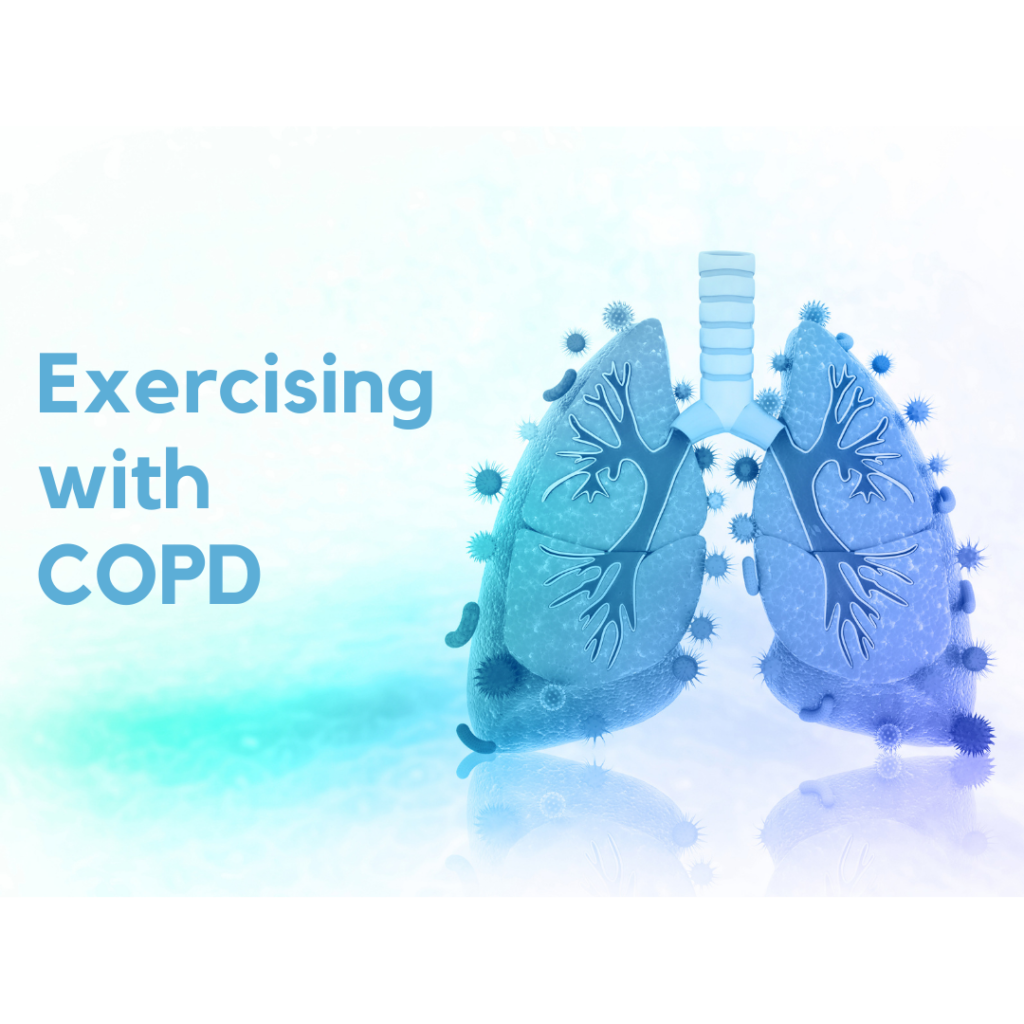November 9, 2020
Exercising with COPD may seem like a daunting task. However, exercise has the ability to provide symptom relief, and improve overall quality of life.

What is COPD?
Chronic obstructive pulmonary disease (COPD) is a chronic inflammatory lung disease that causes a disruption in airflow from the lungs. COPD worsens over time, making it a progressive disease. COPD is a treatable condition with many individuals managing symptoms and living a high quality of life.
Similar to dementia, symptoms of COPD often do not appear until significant lung damage has already occurred. Often times emphysema and chronic bronchitis are culprits in developing COPD. Smoking exposure also proves to be a risk factor that may worsen symptoms.
Symptoms of COPD include:
- Wheezing
- Shortness of breath, especially during physical activity
- Chest tightness
- Chronic cough with mucus
- Frequent respiratory infections
- Lack of energy
- Swelling in ankles of feet
Exercising with COPD
In the earlier stages of studying many chronic conditions, it was recommended to avoid exercise altogether. COPD was unlike the others. The earliest findings date back to 1814. William Briscoe was the first person to use the term COPD at a conference in 1965. It was around that time physicians and researchers also understood that exercise is a beneficial form of therapy for those living with COPD.
Patients with COPD respond differently to exercise compared to their healthy, age matched counterparts. The limitations to exercise can be due to a number of factors. These factors include gas exchange abnormalities, dynamic lung hyperinflation, insufficient energy to supply to peripheral and respiratory muscles, or reduced metabolic capacities. The factors that play a role in exercise intolerance also affect the ability to perform activities of daily living.
The Impact of Exercise
As mentioned, those living with COPD respond differently to exercise compared to healthy individuals.
Of the utmost importance is the effect on activities of daily living. Unfortunately, exercise cannot entirely reverse the course of the condition itself, but it can allow for greater independence. Those living with COPD often experience inactivity due to deconditioning and increased symptom prevalence. Without the use of exercise therapy, said symptoms continue to worsen thus limiting the independence of an individual. However, exercise, can reduce inactivity and increase the likelihood of independence.
Along with greater independence comes an improvement in quality of life. Many individuals wish to remain independent as long as possible. More often than not, individuals who lose their independence also experience a decline in their overall happiness. Exercise continues to plays a large role in improved mood, sleep quality, stress, etc., but it also creates an opportunity for an overall improvement in quality of life. Those among the aging crowd, living with COPD or not, wish to maintain their quality of life. Many struggle to utilize the proper tools to do so. Exercise is undoubtedly one of the most effective strategies to do so. Socialization and sustaining the hobbies they have enjoyed over the years play a substantial role as well.
The Research Behind Exercising with COPD
Exercise physiologists continue research as to what exercise modality is best to provide symptom relief. In previous studies it was said that low intensity, continuous training may be more beneficial because it does not cause onset of dyspnea. However, more recent studies now argue that high intensity interval training may elicit greater benefit. Exercise all together increases exercise tolerance, improves breathlessness and leg fatigue. Both exercise modalities lead to measurable improvement in exercise capacity and quality of life. The question remains, which is best suited for individuals and their disease severity?
All in all, regardless of disease severity individuals should be referred to an exercise program. The exercise program should be carried out by a professional who is knowledgeable and understands the disease progression. Referral to an exercise program should not be postponed until the disease progresses to a worse state, rather early in the disease process to mitigate further deconditioning.